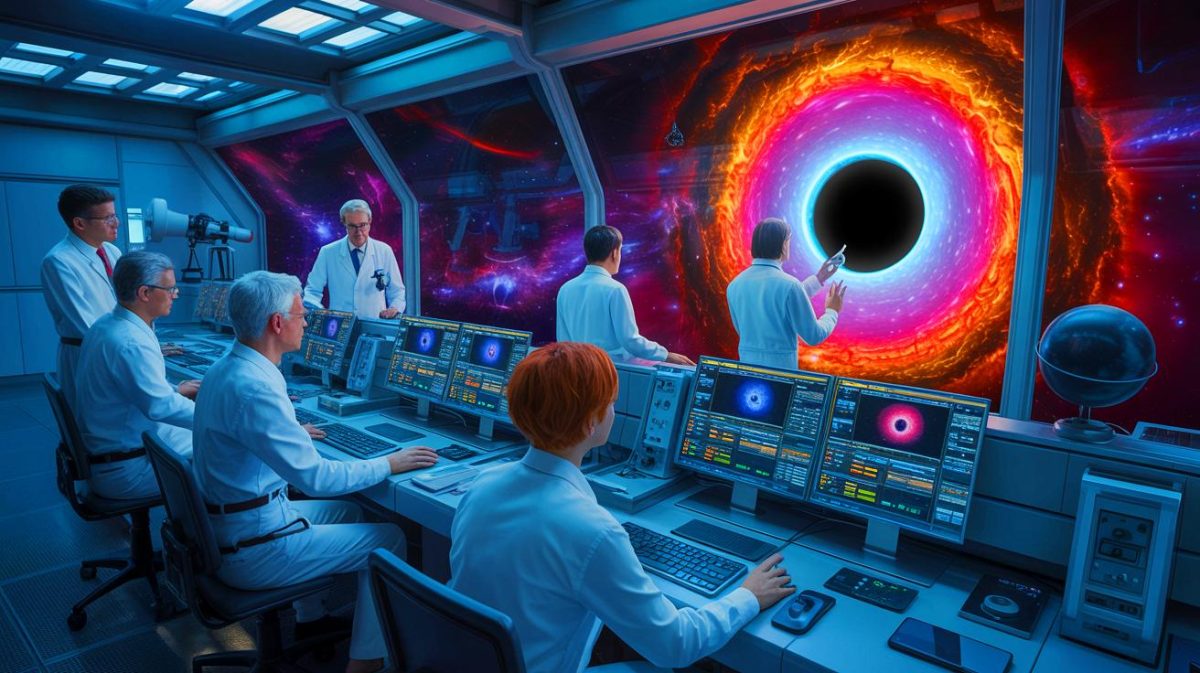| IN A NUTSHELL |
|
In the quest to unveil the mysteries of the universe, artificial intelligence (AI) is proving to be an invaluable ally. Until recently, the enigmatic nature of supermassive black holes made them elusive subjects for astronomers, with traditional telescopes falling short of revealing their secrets. However, a groundbreaking project involving AI and millions of simulations is bridging this gap, offering new insights into these cosmic giants. By leveraging neural networks, researchers are now able to interpret complex data from black holes, potentially transforming our understanding of these mysterious entities.
The Event Horizon Telescope: A Global Effort
The Event Horizon Telescope (EHT) represents a monumental achievement in astronomical research. Rather than being a single instrument, the EHT is a network of radio telescopes scattered across the globe, working in unison to observe black holes. This collaborative effort has already yielded significant results, including the iconic images of the supermassive black holes at the centers of galaxies M87 and Sagittarius A*. These images, although groundbreaking, are not traditional photographs. Instead, they are visual representations of radio waves emitted by the black holes, processed through sophisticated algorithms.
The creation of these images necessitates the use of supercomputers, which process vast amounts of radio signal data captured by the EHT. However, much of this data was previously considered too complex to interpret and was subsequently discarded. Now, with advancements in AI, particularly the neural network developed by the Morgridge Research Institute, there is renewed potential to delve into this neglected data pool, enhancing the resolution of EHT observations and uncovering new cosmic phenomena.
AI Breakthroughs in Black Hole Research
Utilizing a neural network trained on millions of black hole simulations, researchers have made significant strides in analyzing data previously deemed unreadable. This innovative approach has allowed scientists to establish new parameters for Sagittarius A*, the supermassive black hole at the heart of the Milky Way. By applying AI to the discarded data, researchers generated an alternative image of the black hole’s structure, revealing previously unknown characteristics.
The profound implications of this research are evident in the discovery of Sagittarius A*’s near-maximal rotational speed. Such insights are crucial for understanding the behavior of radiation around the black hole and assessing its stability. With AI, these revelations are just the beginning, offering a glimpse into a future where the mysteries of the universe become increasingly accessible.
Implications of Discovering Sagittarius A*’s Speed
The revelation that Sagittarius A* is spinning at nearly its highest possible speed challenges existing theories and opens new avenues for research. Knowing the black hole’s rotational speed is essential for several reasons. Firstly, it provides insight into the dynamics of the accretion disks that surround black holes, which consist of material spiraling inward. The speed at which Sagittarius A* rotates can affect how this material behaves and interacts with the black hole’s immense gravitational pull.
Moreover, understanding the rotational speed helps astronomers predict how radiation and energy are emitted from the vicinity of the black hole. These emissions can influence the surrounding galactic environment, impacting star formation and other cosmic processes. In essence, the speed of Sagittarius A* is a key piece of the puzzle in uncovering the broader implications of black hole activity within galaxies.
Looking Ahead: The Future of AI in Astronomy
The integration of AI and machine learning into astronomy is a promising frontier that could revolutionize our exploration of the universe. As emphasized by lead researcher Michael Janssen, these initial findings are merely a first step. The potential to refine and expand associated models and simulations is vast, promising more detailed and accurate depictions of black hole phenomena. This approach not only defies previous theoretical assumptions but also enhances our ability to visualize and comprehend the cosmos.
As AI continues to evolve, its application in astronomy will likely lead to even greater revelations. By tapping into the wealth of data produced by global telescopic networks, researchers can unlock secrets previously concealed by the universe’s vastness. The collaboration between advanced technology and human ingenuity stands to reshape our understanding of space, inviting us to question what other cosmic enigmas await discovery.
As the boundaries of astronomical research expand with AI’s help, the universe promises to reveal its secrets more readily than ever before. With these advancements, we are left to wonder: What other hidden truths will AI uncover in the cosmos, and how will they reshape our understanding of the universe?
Did you like it? 4.6/5 (29)







Wow, AI is everywhere now! What’s next, AI making coffee? ☕🤖